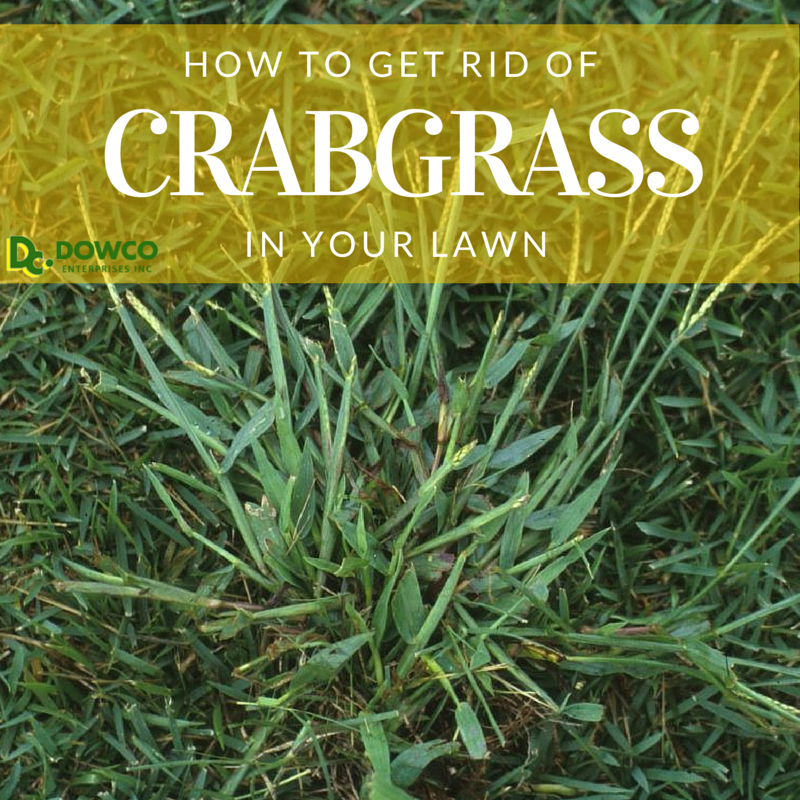What a crazy summer it’s been! If you’re living in St. Louis, by now you’ve probably experienced a few things going on with your lawn: Brown spots (turf disease), nutsedge (commonly called nut grass or water grass), and crabgrass. Does this sound about right?

Even in Dowco lawns we’ve seen an unusual amount of crabgrass this year. Why? The answer is the same across the board. Heat and rain. Rain. Heat. And more rain with heat...
Why didn't my crabgrass pre-emergent work to protect my lawn from crabgrass?

The crabgrass pre-emergent you or your lawn care company put down on your lawn this spring was a protection barrier against crabgrass. Think of it as a thin layer that is placed on top of the soil that will kill the crabgrass as it sprouts.
Assuming that timing & application rate of your crabgrass preventer was not an issue, there are three main reasons for a breakdown in the barrier:
1. Physical damage - Any time the thin layer is penetrated whether by aeration, animal digging, weed pulling, raking, or heavy traffic, it will reduce the effectiveness.
2. Rain - Watering in the product when it is applied will help it penetrate to the soil. However, substantial moisture will weaken the barrier.
3. Heat - most preemergents lose their effectiveness in extreme heat (temperatures over 90 degrees). On average we receive 44 days over 90 degrees during the summers in St. Louis.
If the crabgrass preventer is active during the time that the crabgrass is trying to sprout (early spring when the temperatures are warming up) it will be effective at killing it.
However, since crabgrass seeds can lay in the soil until the conditions are just right, if the barrier is weakened or disturbed when that happens, you'll notice crabgrass developing in your lawn. The picture shown here is crabgrass germinating where the lawn was attacked by fungus, leaving it vulnerable.
How do I get rid of the crabgrass in my lawn now?
A lot of our people see crabgrass and immediately want us to spray it. However, the summer is not the best time to treat it with an herbicide. Crabgrass and desirable turf grass are kissing cousins, so to speak, so an herbicide hot enough to take out the crabgrass is going to do a number on the surrounding grass. This will open up a space for new crabgrass and other invasive weeds to pop up... which turns your lawn into a battlefield. An endless cycle of spray, kill, re-infest, spray, kill, re-infest.
So what is the best approach at this time?
This is a tricky question, with a lot of answers, but the ONE thing you should be sure of to do now is plan to aerate and overseed heavily in the fall.

One of the benefits of crabgrass is that it lets you know when soil has too much compaction. When crabgrass emerges, it loosens the soil so it can more readily absorb water and nutrients and restore it to the healthy micro environment it should be. Put plainly, crabgrass is a natural way of letting you know it’s time to aerate your lawn.
Fall aeration reduces the amount of compaction to the soil and allows it to absorb the water and nutrients it needs. Adding new seed (overseeding) to your turf each year along with aeration helps build a thicker and more resistant turf.
Dowco is scheduling aeration and overseeding starting the last two weeks of August and wrapping up in October! Now it is easier than ever to schedule your renovation and flagging by using our website to select a date.
So are you ready for a healthy lawn?
You may also like these articles:
Winning the War Against Crabgrass




